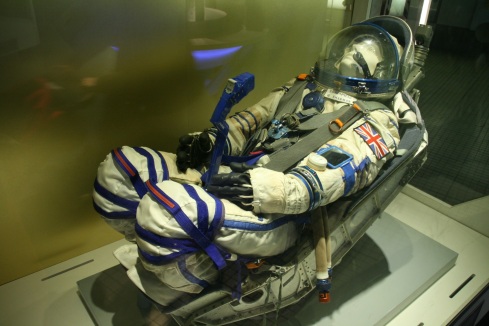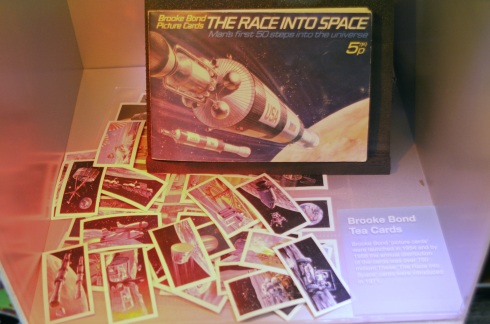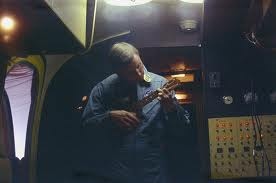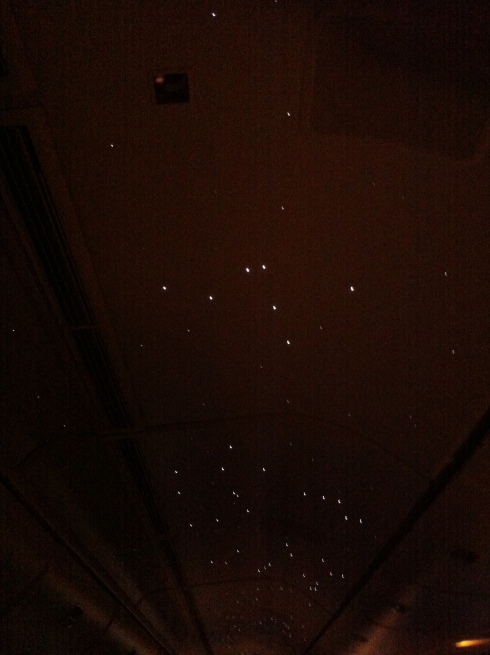I’ve spent a bit of time adding events and some things I want to see in Jan and through 2013 to the Google Calendar and the observation plans page tonight.
I do this for my own purposes but if anybody else is interested, feel free.
January 2013 Observation Plans
7 JanBromsgrove Astronomical Society – Webcam Imaging
19 NovWent to a meeting of the Bromsgrove Astronomical Society. I’m thinking of joining. I’d considered Birmingham or Walsall’s groups but they’re too urban. I’m looking for one that gives an opportunity to observe away from the city lights but that isn’t too far.
It was a wet evening so no chance for observing but there was a very interesting talk with a lot of in depth detail on webcam imaging. I learnt a few interesting things that I hope to put into practice.
– Maximum capture times for various solar system objects to reduce blurring due to the speed of their rotation.
– Frame rates
– using the histogram in Sharpcap to optimise exposure
– what gamma is
– which webcams to use. Annoyingly the best webcam still seems to the rare and almost out of date Philips Toucam or SPC900. Ideally I’d like to get my hands on one of them without spending a fortune second hand on eBay. There must still be loads sitting in boxes in spare rooms unused. Otherwise it seems to be the costly dedicated astro-webcams. For the moment I’ll stick with the AsdaCAM I hacked together.
National Space Centre – Leicester
19 NovWe have a National Space Centre. It’s in Leicester. Given that I’ve always viewed any aspirations we may have about a space programme through the prism of an Eddie Izzard routine “We didn’t have enough money to put a man in a track suit up a ladder!” both these facts surprise me.
The other weekend I decided I wanted to go see a proper planetarium show. I decided against the one at the Think Tank in Birmingham because I didn’t really want to pay to go into the Think Tank again. A quick Google told me that the National Space Centre also had the Patrick Moore Planetarium so that was my decision. One of my friends came with me and we were there for about 6 hours. It was £13 to get in which was reasonable and by doing a gift Aid on it this gives return visits within a year. I’ll be going back again I think.
We took in a couple of planetarium shows. The first was the free one called “We Are Aliens” which was better than I expected being a CGI thing for the kids. For some reason it was a bit dark, kind of like the light loss you get with 3D but we weren’t wearing 3D glasses. It was impressive though being projected across the entire dome and there was some interesting stuff on exoplanets. There was a nice Solar System flythrough that I particularly liked.
We also went to a later proper planetarium night sky show which cost an extra £3. I could have done with a little less about the mythology relating to the constellations and more stuff to look at being pointed out. As it was I drifted off on my own a bit during the legends of Perseus and Andromeda and went did a bit of constellation spotting of my own, looking for other targets that I knew should be there that weren’t pointed out. They had pointed out Cassiopeia, Orion, Taurus, Andromeda, Perseus, Pegassus, the Plough. I also spotted M31 – the Andromeda Galaxy, the Hyades cluster, M45 – the Pleiades, the double cluster in Perseus, Jupiter and quite a few others.
There’s some good exhibition areas too. They’ve a Soyuz hanging over the main ticket area and a couple of rockets in the rocket tower. The Into Space area was one of the best, probably because it had stuff, a lot of which seemed to have been used by the most famous British Astronaut, Helen Sharman.
In the rocket tower they had a display that showed the “Space Race” on a timeline. One of the display objects that excited me was the set of Brooke Bond Tea Cards that I had as a kid. Driving home this evening I was listening to The Infinite Monkey Cage Podcast and Brian Cox was talking about how he’d been inspired by these as a boy too.
Other areas such as Exploring the Universe had to rely on models and information boards. These were pitched at a good level though, understandable to children and those with very little understanding of the subject, but at the same time giving adults and those with greater knowledge something to think about.
There was also a section called Tranquility Base where there were interactive things to play with and some sort of 3D simulator ride that we actually ran out of time to have a go on. Next time.
All in all, a great day out. Just one word of warning. Even though the car park is dedicated to the site, it’s still pay and display. I only realised as we were heading back to the car. I guess I might have been a bit too excitable when we arrived. Luckily I got away with it.
Gravitational Waves – Lecture, University of Birmingham- Tuesday 30 October 2012
30 OctWent to a lecture at the University of Birmingham this evening. It was part of their outreach programme. There are further events coming up.
The lecture was supposed to be about the Square Kilometre Array (SKA) but the visiting lecturer was ill, so Dr Andreas Freise from University of Birmingham stepped in and delivered a lecture on Gravitational Waves and a Proposed Einstein Telescope(ET).
Below are my scribbled notes pretty much as is, purely for my own purposes as a reminder.
Gravitational waves stretch and squash on different axes
LIGO – Laser Interferometer Gravitational wave Observatory
Gravitational waves are a prediction of general relativity
Ripples in space-time
Sources – binary systems, pulsars, accreting stars, supernovae
Everything actually generates them but needs to be really large to be measurable
Detected using an Interferometer
Was impressed to see Processing being used to demonstrate a Michelson interferometer
(aside – Sky at Night Magazine November 2012 has an article about Michelson and Morley and the theory of the aether as a medium for propagation of light. They used an interferometer to attempt to prove the existence of the aether – the failure ended up disproving it)
The interferometer acts as a detector. A laser is fired into it. If output changes – then either the mirror moved or it’s a gravitational wave. In the interferometer photon is not affected by the the GW but the mirror is. A lot of the tech seems to be about ensuring the mirrors don’t move so therefore anything that get’s detected is a gravitational wave.
LIGO is a big version of The interferometer.
Mirrors are decoupled and hanging on wires so they don’t move. Have to invent stuff.
Need very clean glass to eliminate thermal lensing
It didn’t work though so now they upgrade to the advanced LIGO.
This will be ready in 2015.
If it doesn’t see Gravitational waves though – does that mean prediction is wrong or mean it didn’t work?Have developed more For the advanced LIGO they have developed a more complex interferometer.
More information in the LIGO magazine – PDF download available.
Ground vibration seems to be the biggest problem – keeping that mirror as still as possible is essential. – (I’d wondered about that) so the next stage would be to go underground. Also suggested going into space.
Questions from the audience:
Graviton got mentioned – particle equivalent of gravity. There is a field for each particle – quantum physics. Can behave as a field. Can behave as a particle. Cf photon and em field.
Practical implications?
Hope to see something different in the sky. Perhaps. Add to cosmological models.
My question: Why go to space?
Ground vibrations. Gravitational pull to centre of earth distorts the geoometry of the mirrors and puts a limit on length of about 3m
There was an excellent question from one of the school students. She asked if the ET telescope is intended to be underground and in a triangle so there are two sets of 3 detectors picking up from multiple directions, why not take it from a two dimensional arrangement, ie a triangle, to a 3 dimension one – a tetrahedron?
Brilliant question. Lecturer seemed surprised by it. Comes down to financing and that would be the 4th generation. They need to fund the 3rd generation, the ET first.
More info about detection of gravitational waves at http://www.gwoptics.org/
A bit of further reading about Gravitational Waves from Wikipedia. I see that the Astronomy Cast podcast has an episode about them. I should take a listen.
A final thought, having read the article about Michelson and Morley’s experiments with interferometers to attempt to detect the aether and the subsequent failure of this that led to a move away from that model of understanding. So far Gravitation Waves have not been detected, only predicted and inferred. What if using similar methods to the Michelson-Morley experiment ultimately fails to detect them?
Bromsgrove Astro Open Evening – Monday 15 October 2012
15 Oct I went across to an open evening at Bromsgrove Astro this evening. It’s a bit out of a distance about half an hour away but that’s a good thing. They hold their meetings at Bromsgrove Rugby Club. Seemed quite dark there, once they have the floodlights off and they also have access to a dark site.
I went across to an open evening at Bromsgrove Astro this evening. It’s a bit out of a distance about half an hour away but that’s a good thing. They hold their meetings at Bromsgrove Rugby Club. Seemed quite dark there, once they have the floodlights off and they also have access to a dark site.
I’ve been to a few Walsall Astro events but they meet on a Thursday which clashes with my ukulele activities so whilst I have an affinity for Walsall, having grown up round there, that’s out.
Spoke to a couple of members who were friendly and gave me some good advice on stacking and processing the imaging data I collected in Oman (astronomer talk for photos what I took).
I’m seriously thinking of joining due to the combination of a dark place to observe safely and access to people with experience I can learn from.
By way of tribute to Sir Bernard Lovell 1913-2012
8 AugBy way of a tribute to Sir Bernard Lovell who died this week.
The wonderful Lovell Telescope at Jodrell Bank was used as a giant projection screen for the Flaming Lips Transmissions gig. Here’s the intro to Race for the Prize that I filmed there last year.














